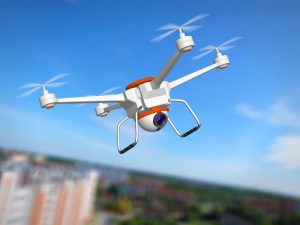
Quadrocopter Drone
Drone traffic creates new hurdles for small aircraft operators, as we’ve now seen a drone crash into a helicopter over New York City and another collide with a plane in Canada. On the ground, we have tools like an aircraft tug to assist with traffic on the ground, but how should aviators move forward in a sky filled with civilian-operated quadcopters?
Thankfully, the recent drone encounters did not leave anyone harmed. Flying at altitudes higher than allowed in each jurisdiction, the drones damaged the helicopter and plane but did not crash through the windshield or enter a turbine.
Drone Safety Research
It was only a matter of time before a small aircraft collision with a drone. As Scientific American has reported, researchers had already been examining the possible damage and methods of avoiding such accidents. The University of Buffalo’s CRASH Lab, for example, simulates drone crashes to explore the potential damage to various aircraft parts, in every imaginable situation.
Just as airplane crashes are less common than most people think, drone accidents appear to be exceedingly rare. A report by George Mason University compares the situation to the fact that birds rarely collide with aircraft.
New Frontiers in Small Aircraft Safety
As consumer drones become more widespread, the public should become more educated about altitude regulations, air space restrictions, and general safety.
Small aircraft pilots should stay vigilant while flying low and be aware that drone operators may not respect or adhere to the law.
At DJ Products, makers of the Lindbergh aircraft tug, we help pilots and ground crews save time and avoid injuries that occur maneuvering around the hangar and runway. A battery-powered aircraft tug gives you one less thing to worry about in a constantly changing world.
